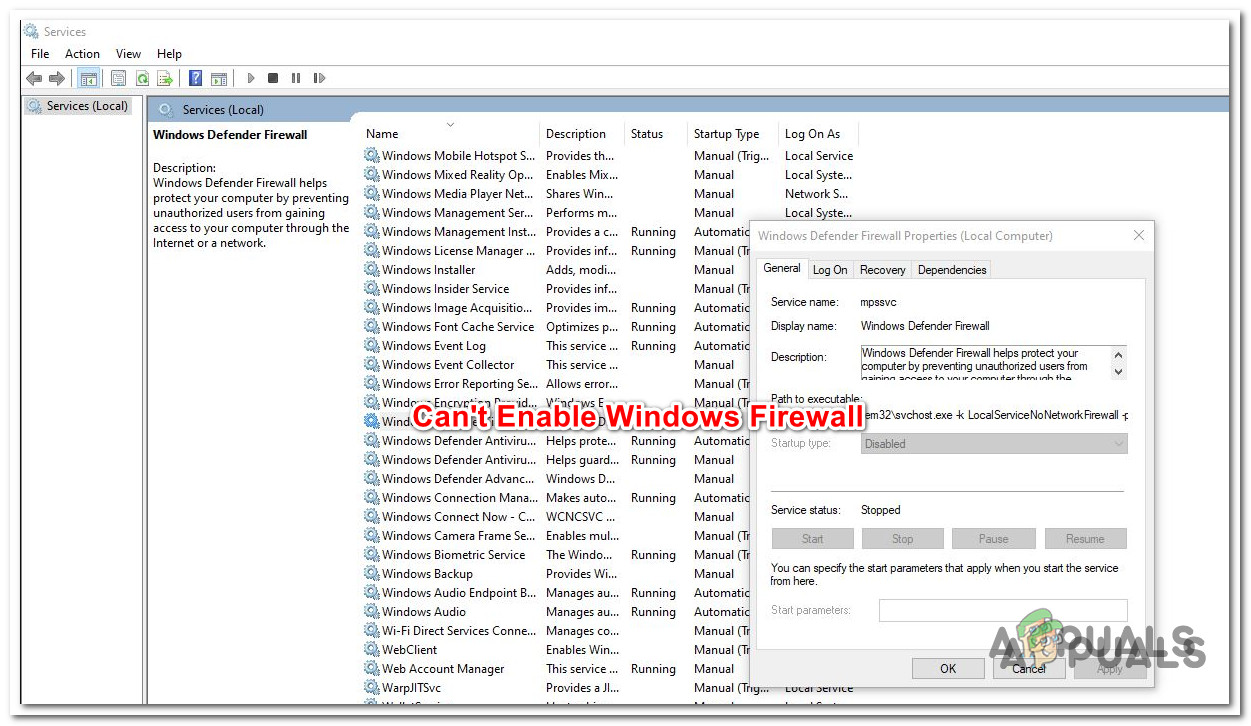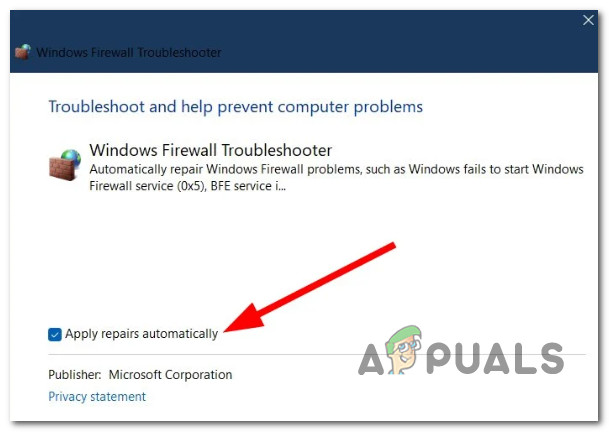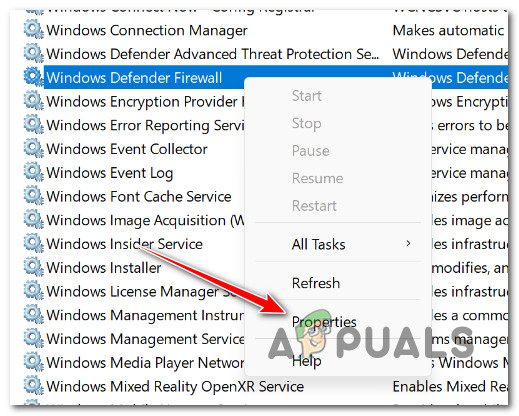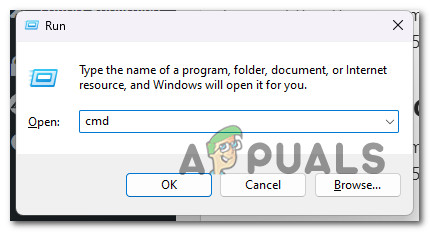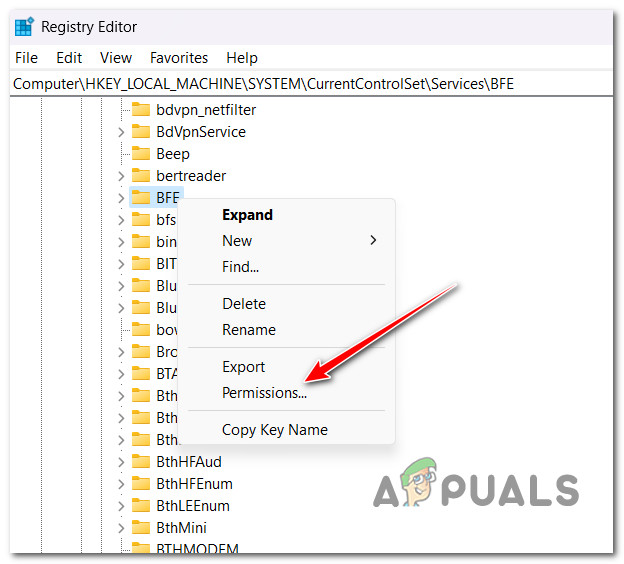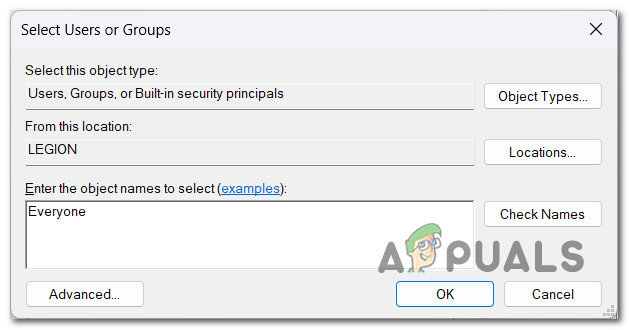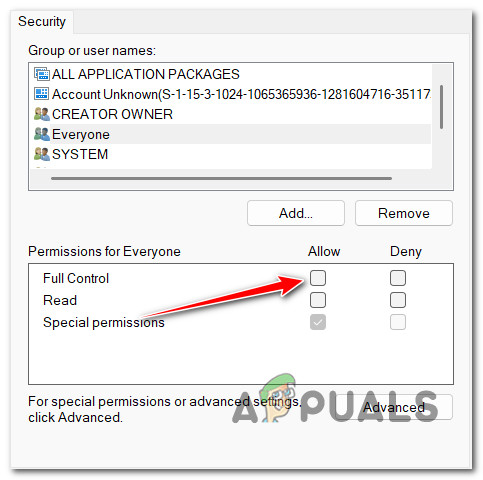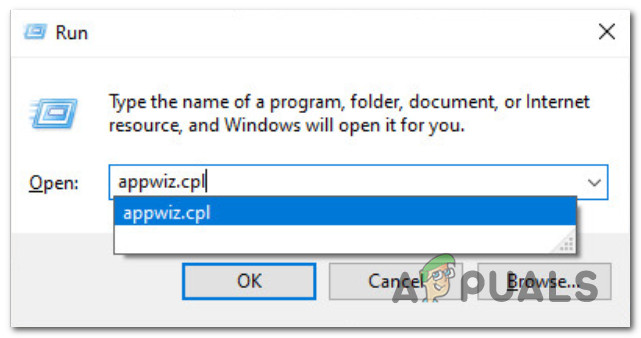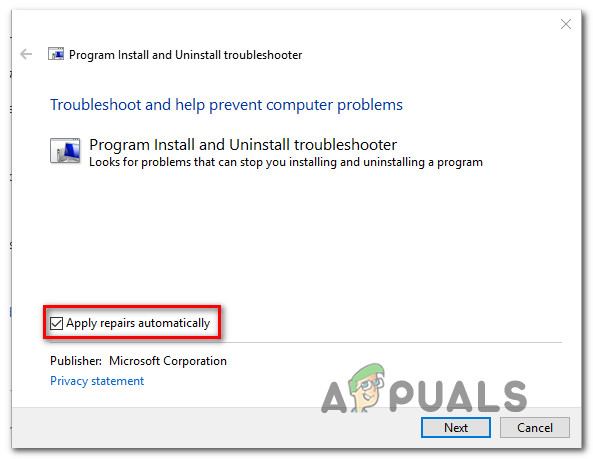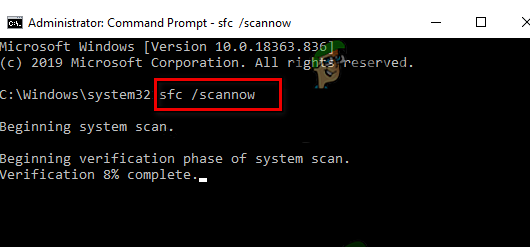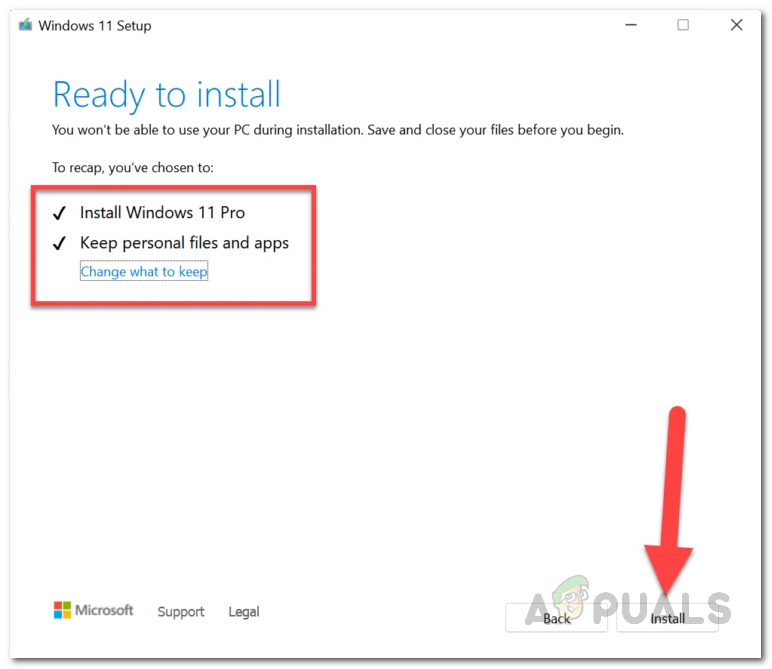After thoroughly investigating this issue, we discovered several different underlying instances where you will see this error occurring. Here’s a list of culprits you should be aware of: Now that we covered every potential culprit that might cause this behavior in your case let’s go over every documented fix confirmed to help treat this issue where the Firewall Component remains disabled on Windows 10 or 11.
1. Run the Windows Firewall Troubleshooter
Anytime there is a core firewall component issue, you may anticipate having trouble accessing the conventional menu of Windows Firewall. Try running the Windows Firewall troubleshooter and see if one of the repair strategies included will fix the issue automatically. If the Windows Firewall Troubleshooter has already supplied a Microsoft repair plan that addresses the error’s primary cause, repairing the issue merely needs running the software and implementing the recommended solution. Note: Windows Firewall Troubleshooter is not part of the default troubleshooting fleet on Windows 10 and 11. You will need to download it externally from the official Windows update. Follow the instructions below to open the Windows Firewall Troubleshooter and deploy the recommended fix: If Windows Firewall remains disabled despite your best efforts, move to the next method below.
2. Restart the firewall service & associated services
If the Windows Firewall troubleshooter did not fix the issue in your case, the next thing you should investigate is a scenario in which the main Windows Firewall and/or a series of associated services are stuck in a limbo state – they’re neither open nor closed. To treat this issue, you’ll need to access the Services screen and force start the main Windows Firewall service + every associated dependency:
Windows Defender FirewallWindows Defender Advanced Threat Protection ServiceWindows Defender Antivirus Network Inspection ServiceWindows Defender Antivirus ServiceWindows Defender Security Center
Follow the instructions below for step-by-step instructions on doing this: If the issue is still not fixed, move to the next method below.
3. Delete the DisableAntiSpyware Registry key
If there is no other third-party antivirus software installed and the problem is GUI-related, you should be able to enable Windows Firewall by removing an underlying .reg key that’s forcing Windows Defender + Windows Firewall to remain disabled. IMPORTANT: The command listed below must be executed with administrative rights. Follow the steps below to remove the problematic Registry key that’s likely forcing the native antivirus protection to remain disabled. Note: Both Windows 10 and Windows 11 are compatible with the procedures below. Continue to the next procedure below if Windows Firewall is still deactivated.
4. Tweak your BFE permissions
You can expect to deal with this issue when the BFE (Base Filtering Engine) permissions that depend on Windows Firewall are misconfigured. In this case, you should be able to fix the issue by editing the BFE permissions via Registry Editor. Note: Our recommendation is to back up your Registry cluster in advance before starting to follow the instructions below. Follow the instructions below to tweak your BFE permissions and allow your Firewall component to function undeterred: If the problem still occurs, move down to the next method below.
5. Reset the Firewall component via CMD
If you have already tried modifying the BFE (Base Filtering Engine) permissions and your firewall remains disabled (even though you’re not using a 3rd party firewall), try forcing the component to enable via a terminal command. You can do this by opening up an elevated Command prompt and running a ‘netsh‘ command to force the Windows Firewall component to enable itself. Note: This method will only work if you are experiencing this issue with Windows Firewall. Do not attempt this method if you are using a 3rd party firewall. Follow the instructions below to reset the Windows Firewall component via Command Prompt: If the Firewall component still refuses to start even though there’s no 3rd party AV or firewall installed, try the next method below.
6. Uninstall the latest Windows update
It’s always hard to predict if a recent Windows update produced unintended consequences to other Windows features. If you started to experience this issue immediately after you installed a Windows update, you could put this theory to the test by uninstalling the latest Windows update that got installed. This approach might be useful if you discover that the Windows Firewall started acting up after you installed a pending update. To remove the most current Windows update, follow the instructions below: Important: Additional instructions are provided so you may conceal the update and stop it from being installed again. Continue with the following step in the technique listed below if the same problem persists.
7. Run DISM & SFC Scans
It turns out that the Windows Firewall’s operation can also be hampered by file corruption. Start running a few scans with two built-in tools, System File Checker (SFC) and Deployment Image Servicing and Management (DISM). Note: Despite some similarities between SFC and DISM, we suggest running both tests immediately after the other to improve your chances of recovering the corrupt system files. If this is the situation, start with a basic SFC scan. Note: Remember that this tool is only local and won’t require a live internet connection. Even if the application seems to have stalled after beginning this procedure, it’s imperative to maintain the CMD window active. Wait patiently for the process to finish. Once the SFC scan is complete, restart your computer to see whether the issue has been fixed. If the same problem is still ongoing with your firewall, run a DISM scan and complete the operation according to the on-screen directions. Note: The key contrast between DISM and SFC is that DISM uses a Windows update component to obtain healthy replacements for corrupt system files. Because of this, you must ensure that you have stable Internet before starting. Whether the DISM scan was successful or not, restart your computer and check to see if Windows Firewall starts operating correctly. If the Windows Firewall component is still not functioning as it should go for the final method below.
8. Perform an in-place repair or clean install
If none of the above steps have assisted you in fixing the Windows Firewall issue, you may conclude that your issue is the consequence of a system corruption issue that cannot be fixed in the conventional manner (with DISM and SFC scans). Other Windows users who had a similar issue said that the issue was fixed once they updated every Windows component. This may be achieved via a clean install or an in-place fix (repair install). Note: The main drawback of a clean install is that you can’t store your stuff (apps, games, personal media, etc.) unless you back them up. Note: The major advantage of selecting a repair install is that you can keep all your personal information, including applications, games, personal media, and even certain user preferences. But the procedure takes a little longer.
Fix: You need to fix your Microsoft Account for apps on your other devices to be…Fix: Sysprep Was Not Able to Validate Your Windows InstallationFix: AnyConnect was not able to Establish a Connection to the Specified Secure…Windows 10 on ARM Will Be Able To Run 32-Bit and 64-Bit Applications With New…
